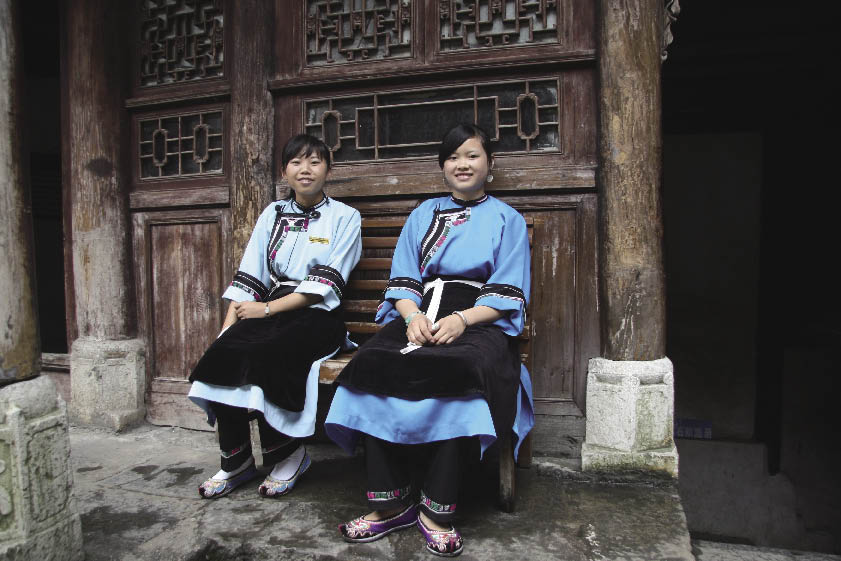|
Garrison Communities: Living Relics of the Ming Dynasty
By SHUAI XUEJIAN
THE Ming Dynasty (1368-1644) is regarded as a high point in Chinese civilization and historically it was certainly one of the richest and most populous empires. However, during its early period, the nation’s economy was in a slump; large areas of arable land had been laid to waste by years of war, and most people were living in dire poverty. In order to restore the peacetime economy and strengthen the country’s borders, Ming Dynasty founder Emperor Zhu Yuanzhang encouraged the garrison troops stationed on the northeastern, northwestern and southwestern borders to reclaim the wastelands. Encouragement came in the form of a promise that both their military ranks and land could be passed down to future generations. Zhu also reinforced the garrison policy by spurring a massive migration – hordes of farmers, architects, servants and merchants from the interior were relocated to borderlands. His policies transformed garrison communities into more complex settlements that strengthened the solidity of the empire’s edge.
A massive army of 300,000 soldiers and civilians following Zhu’s orders settled at today’s Anshun City in Guizhou Province 600 years ago, and set about reclaiming the land around this former garrison frontier. It is possible that Emperor Zhu gave little thought to the possibility that his orders would preserve the Ming lifestyle from that day until this.
 |
| The ultimate retro-chic: Tunpu girls in their traditional costumes. Lu Nan |
In the Streets, the Ming Lives On
On the outskirts of Pingba County of Anshun City, female descendents of the garrison communities are easily mistaken for ethnic minorities in this province, Guizhou, that houses so many. Their dress can trigger the mistake: they wear long blue robes with fat cuffs and black aprons with silk belts. They coil their hair into a bun, fasten it with a silver hairpin and keep it tidy with a white headband. Elaborately-made silver ornaments grace their wrists.These women are called Tunpu people by locals.
“Tun” here means having garrison troops open up wasteland and grow grain, and “pu” means a walled community. For about 100 years of their history, Tunpu people were mistakenly regarded as part of some ethnic minority. It was not until the beginning of the 20th century that some scholars found out the Tunpu culture and lifestyle bore similarities to Chinese civilization south of the Yangtze River.
According to an investigation conducted by the Chinese Academy of Social Sciences in the late 1990s, the Tunpu population exceeds one million; they live in compact communities scattered over an area of 10,000 square kilometers in Anshun’s Xixiu District, Pingba County and Puding County. Ancestors of the Tunpu people moved from what we know today as East China’s Anhui, Jiangsu, Jiangxi and Zhejiang provinces during Zhu’s resettlements. They and their descendants adhered to their relatively advanced southern culture, neither marrying people of other ancestries nor having much communication with the outside world. In this relatively closed environment, their Ming lifestyle has remained well-preserved.
Tunpu costume is their distinctive and major symbol, especially the women’s dress. In addition to the previously described features, they also wear embroidered cloth shoes with pointed toes. Their dress, footgear and hairstyle all resemble that of Ming Dynasty women depicted in art works from that era preserved in today’s galleries and museums.
On a larger scale, the Ming-style structures for military use in some secluded villages are also recognizable throw-backs. Yunshantun is the most representative, as this village has the most completely preserved facilities for defensive use such as stone gates, towers and walls.
| 